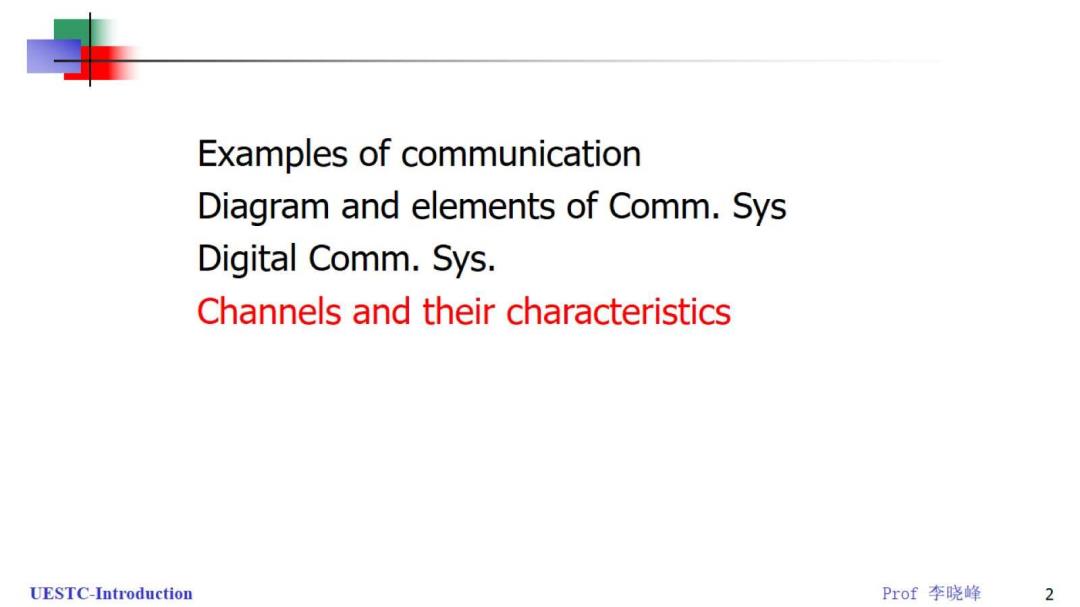
Examples of communication Diagram and elements of Comm.Sys Digital Comm.Sys. Channels and their characteristics UESTC-Introduction Prof李晓峰 2
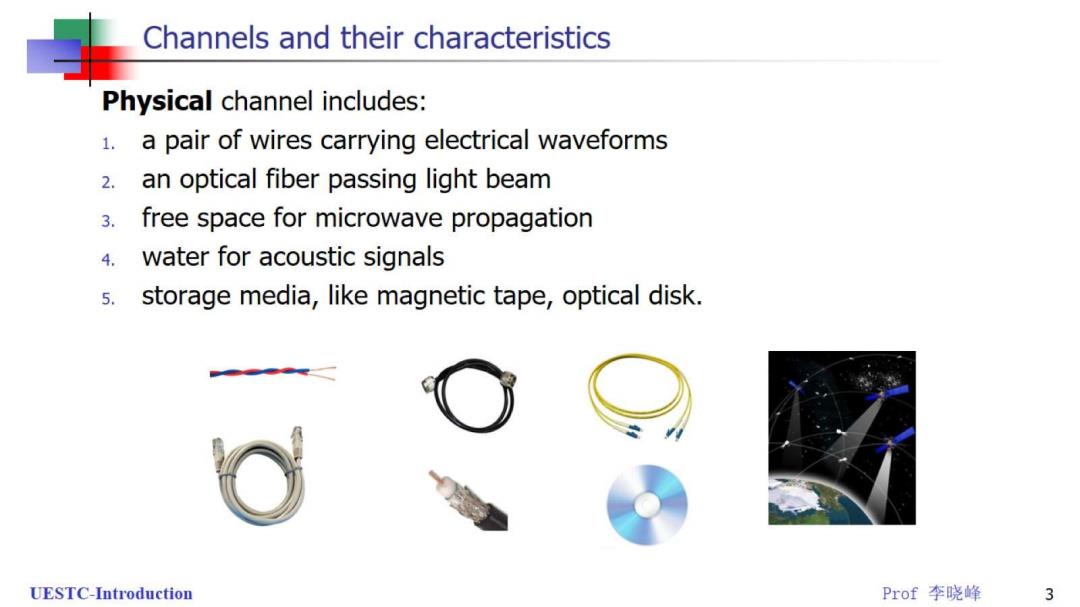
Channels and their characteristics Physical channel includes: 1.a pair of wires carrying electrical waveforms 2. an optical fiber passing light beam 3. free space for microwave propagation 4. water for acoustic signals 5. storage media,like magnetic tape,optical disk. UESTC-Introduction Prof李晓峰 3
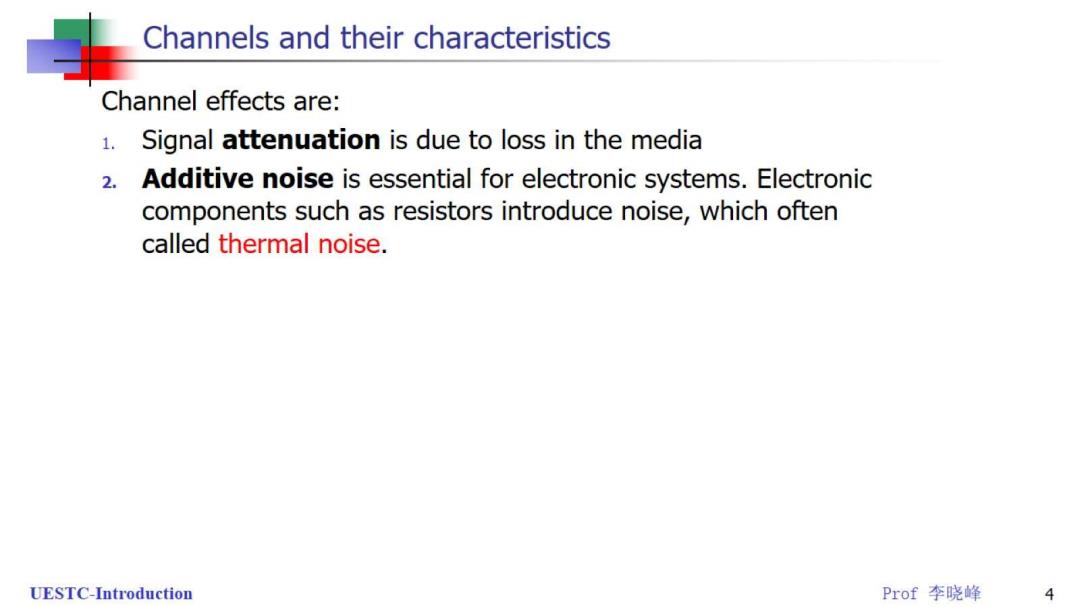
Channels and their characteristics Channel effects are: 1. Signal attenuation is due to loss in the media 2. Additive noise is essential for electronic systems.Electronic components such as resistors introduce noise,which often called thermal noise. UESTC-Introduction Prof李晓峰 4
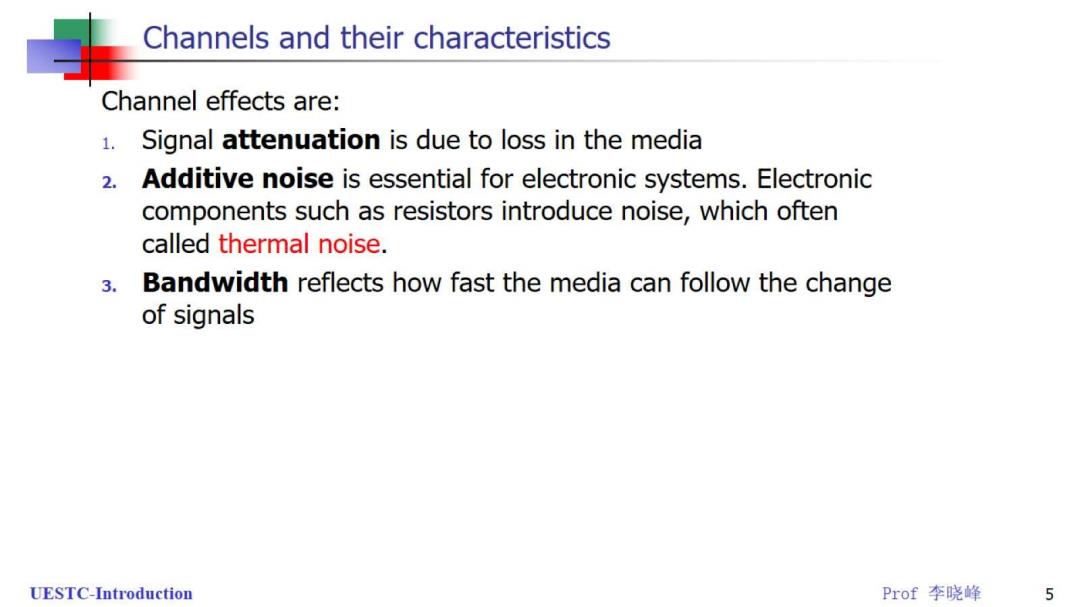
Channels and their characteristics Channel effects are: 1. Signal attenuation is due to loss in the media 2. Additive noise is essential for electronic systems.Electronic components such as resistors introduce noise,which often called thermal noise. 3.Bandwidth reflects how fast the media can follow the change of signals UESTC-Introduction Prof李晓峰 5
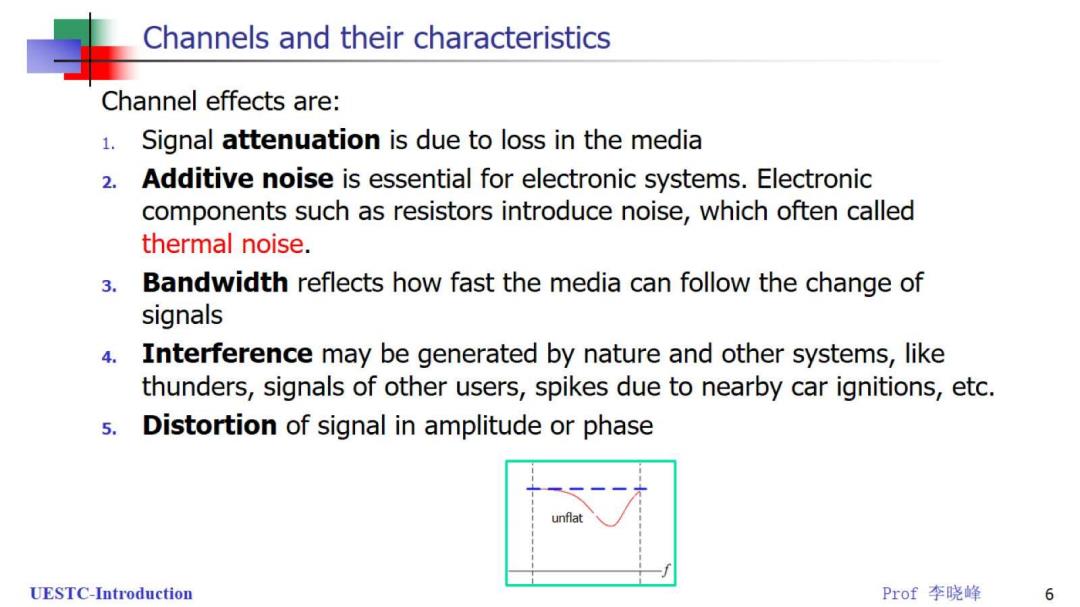
Channels and their characteristics Channel effects are: 1. Signal attenuation is due to loss in the media 2 Additive noise is essential for electronic systems.Electronic components such as resistors introduce noise,which often called thermal noise. 3.Bandwidth reflects how fast the media can follow the change of signals 4.Interference may be generated by nature and other systems,like thunders,signals of other users,spikes due to nearby car ignitions,etc. 5. Distortion of signal in amplitude or phase unflat UESTC-Introduction Prof李晓峰 6
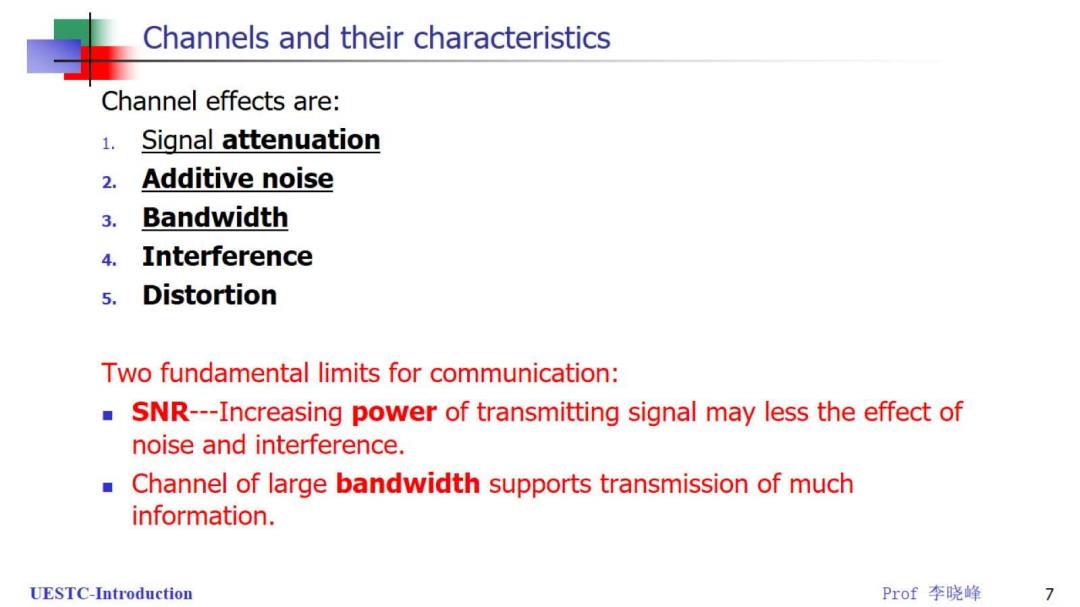
Channels and their characteristics Channel effects are: 1. Signal attenuation 2. Additive noise 3. Bandwidth 4. Interference 5. Distortion Two fundamental limits for communication: ■ SNR---Increasing power of transmitting signal may less the effect of noise and interference. Channel of large bandwidth supports transmission of much information. UESTC-Introduction Prof李晓峰 7
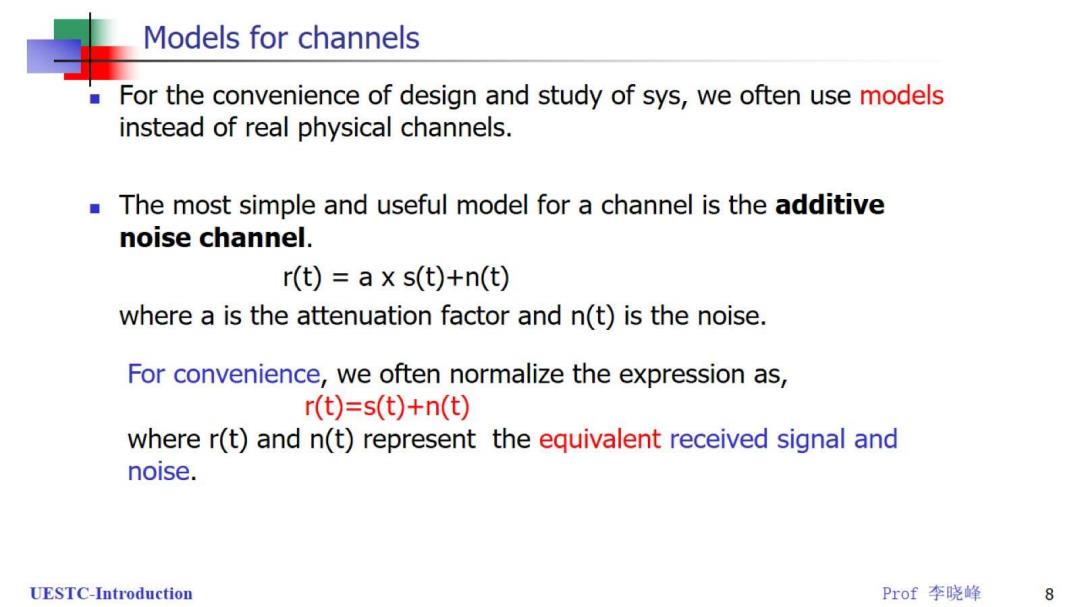
Models for channels For the convenience of design and study of sys,we often use models instead of real physical channels. The most simple and useful model for a channel is the additive noise channel. r(t)a x s(t)+n(t) where a is the attenuation factor and n(t)is the noise. For convenience,we often normalize the expression as, r(t)=s(t)+n(t) where r(t)and n(t)represent the equivalent received signal and noise. UESTC-Introduction Prof李晓峰 8
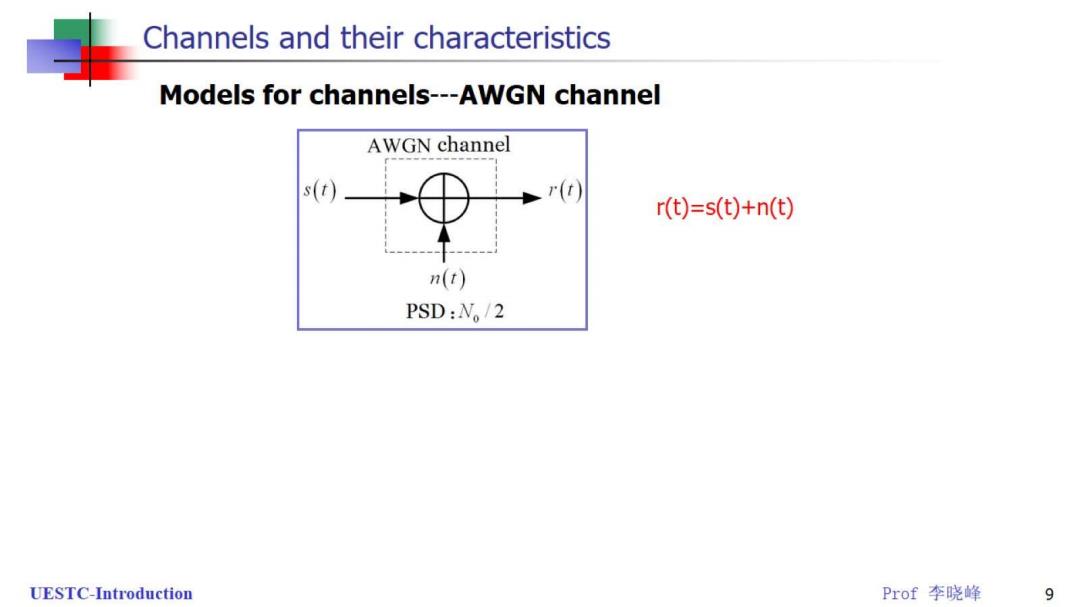
Channels and their characteristics Models for channels---AWGN channel AWGN channel s(r) r(t) r(t)=s(t)+n(t) n(r) PSD:N。/2 UESTC-Introduction Prof李晓峰 9
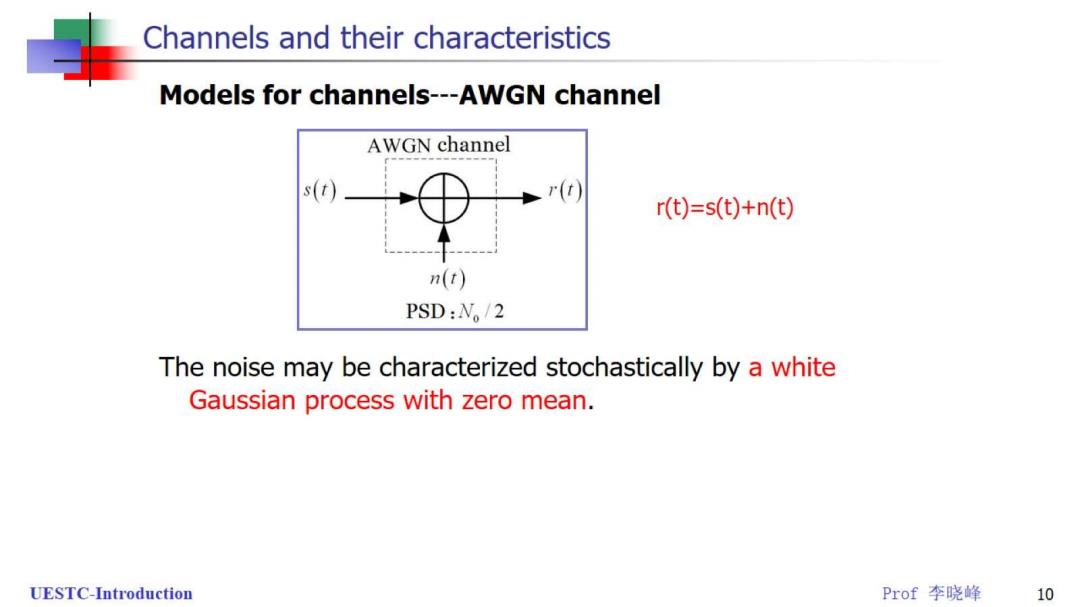
Channels and their characteristics Models for channels---AWGN channel AWGN channel s(t) r(t) r(t)=s(t)+n(t) n(r) PSD:N。/2 The noise may be characterized stochastically by a white Gaussian process with zero mean. UESTC-Introduction Prof李晓峰 10

Channels and their characteristics Models for channels---AWGN channel AWGN channel s(t) r(t) n(r) PSD:N。/2 The noise may be characterized stochastically by a white Gaussian process with zero mean. 1.Gaussian arbitrary RVs in the process have a joint Gaussian distribution. UESTC-Introduction Prof李晓峰 11